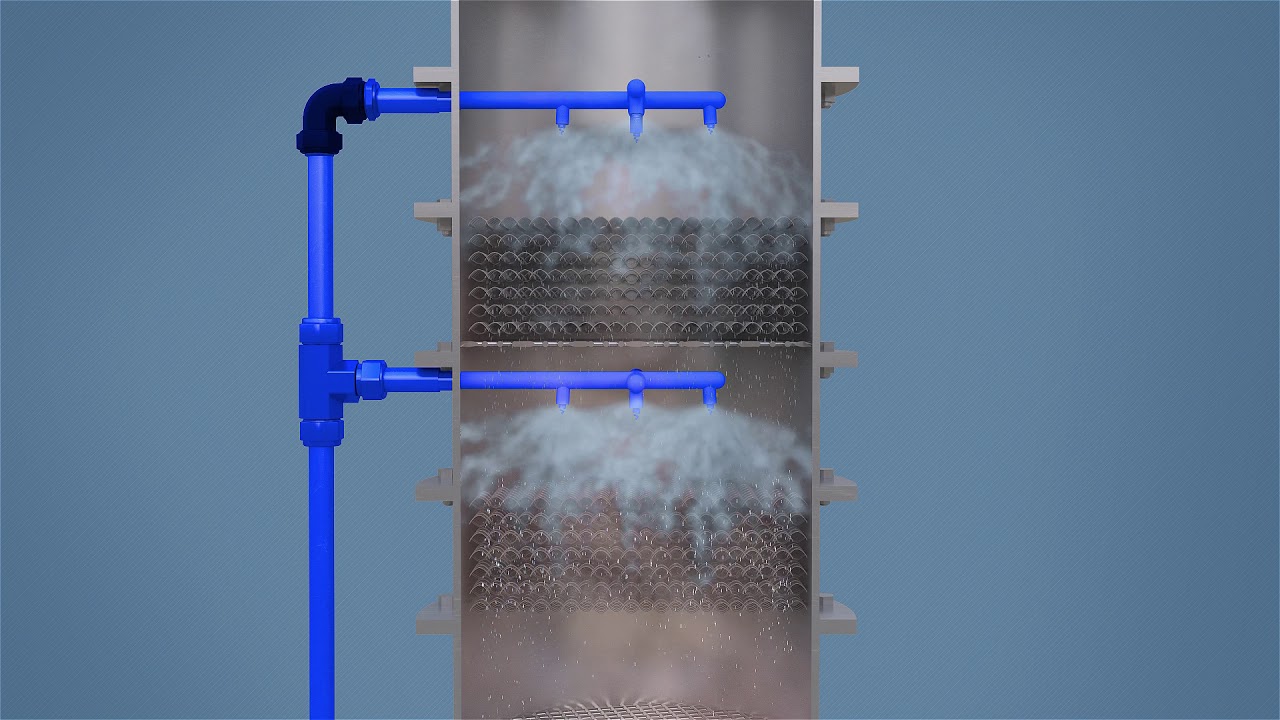As environmental regulations across the world become more stringent in limiting air pollutants, scrubber systems have emerged as a vital technology for industries to reduce their emissions and comply with norms. These systems capture gaseous and particulate pollutants from industrial exhaust streams before they are released into the atmosphere. In this article, we discuss the working of scrubber systems, their different types, applications and importance in creating a sustainable future.
How do Scrubber Systems Work?
Scrubber systems work on the principle of contacting the polluted gas stream with a reagent such as water or alkali solution, which results in the capture and removal of pollutants through physical or chemical reactions. The dirty exhaust first enters the scrubbing chamber or tower of the system. Within the chamber, the gas comes into intimate contact with the scrubbing liquid through mechanisms like spraying, countercurrent contacting or venturi scrubbing.
This contact allows pollutants like sulfur dioxide, hydrogen chloride and particulate matter to get dissolved or trapped in the scrubbing liquid. The cleaned gas then exits the scrubber system through an outlet duct. The dirty scrubbing liquid containing the captured pollutants is collected at the bottom of the chamber. It is then treated and disposed of or recycled depending on the type of scrubber and pollutants removed.
Major Types of Scrubber Systems
There are different types of Scrubber System used for various industrial applications:
Wet Scrubbers: As the name suggests, these systems use water or alkaline solutions as the scrubbing liquid. Common examples are spray towers, venturi scrubbers and packed bed scrubbers. They are effective in removing gaseous and particulate pollutants.
Dry Scrubbers: Dry scrubbing technologies like spray dry scrubbers, dry sorbent injection systems and fabric filters rely on injected dry reagents instead of liquids for pollutant removal. They are suitable when water usage is not feasible.
Hybrid Scrubbers: Some systems combine wet and dry scrubbing mechanisms to remove multiple pollutants simultaneously. A popular hybrid is the seawater scrubber which uses sea water spray for sulfur dioxide capture along with a particulate control device.
Applications in Different Industrial Sectors
Power Generation: Coal and oil-fired power plants use wet limestone scrubbers to strip sulfur dioxide from flue gases as per environmental norms.
Cement Manufacturing: Exhausts from kilns contain pollutants like dust, sulfur and chlorine. Scrubbers help cement companies achieve emission compliance.
Waste Incineration: Municipal solid and medical waste incinerators employ scrubbers for treatment of flue gases containing acid gases and particulates.
Metal Processing: Industries like iron & steel, zinc, copper and aluminum utilize scrubbers for control of metallic fumes and dust from smelting and other processing operations.
Pulp & Paper: Due to the inherent pollution load, pulp and paper mills heavily rely on scrubbing units like venturi scrubbers and packed towers for air pollution control.
Importance of Scrubber Systems
Scrubber systems play a vital role in ensuring a sustainable future through the following benefits:
Environment Protection: By capturing harmful emissions, scrubbers help industries abide by emission norms and preserve local air quality for public health.
Compliance with Regulations: Tighter emission standards globally necessitate advanced cleaning equipment like scrubbers to maintain regulatory compliance.
Cost Savings: In the long run, scrubber retrofits save costs associated with penalties for non-compliance and lawsuits related to pollution.
Reuse of Resources: Some scrubber types allow treatment and reuse of water or capture of pollutants as saleable byproducts, promoting circular economy.
Localized Solutions: Their modular nature and flexibility to handle multiple pollutants make scrubbers suitable even for small and medium industrial units.
Sustainable Production: By enabling emission control, scrubbers allow established polluting industries to transition into greener operations and continue production sustainably.
With the pressing need worldwide to curb global warming and transition to cleaner fuels and production methods, scrubber systems are positioned to play a role as an effective technology in industrial emission management. Their wide applicability, ability to treat multiple exhaust streams and compliance benefits make them indispensable air pollution control devices going forward. Further advancements in scrubber designs and integration with emerging monitoring technologies will continue to promote sustainable industrial development.
*Note:
1. Source: Coherent Market Insights, Public sources, Desk research
2. We have leveraged AI tools to mine information and compile it

